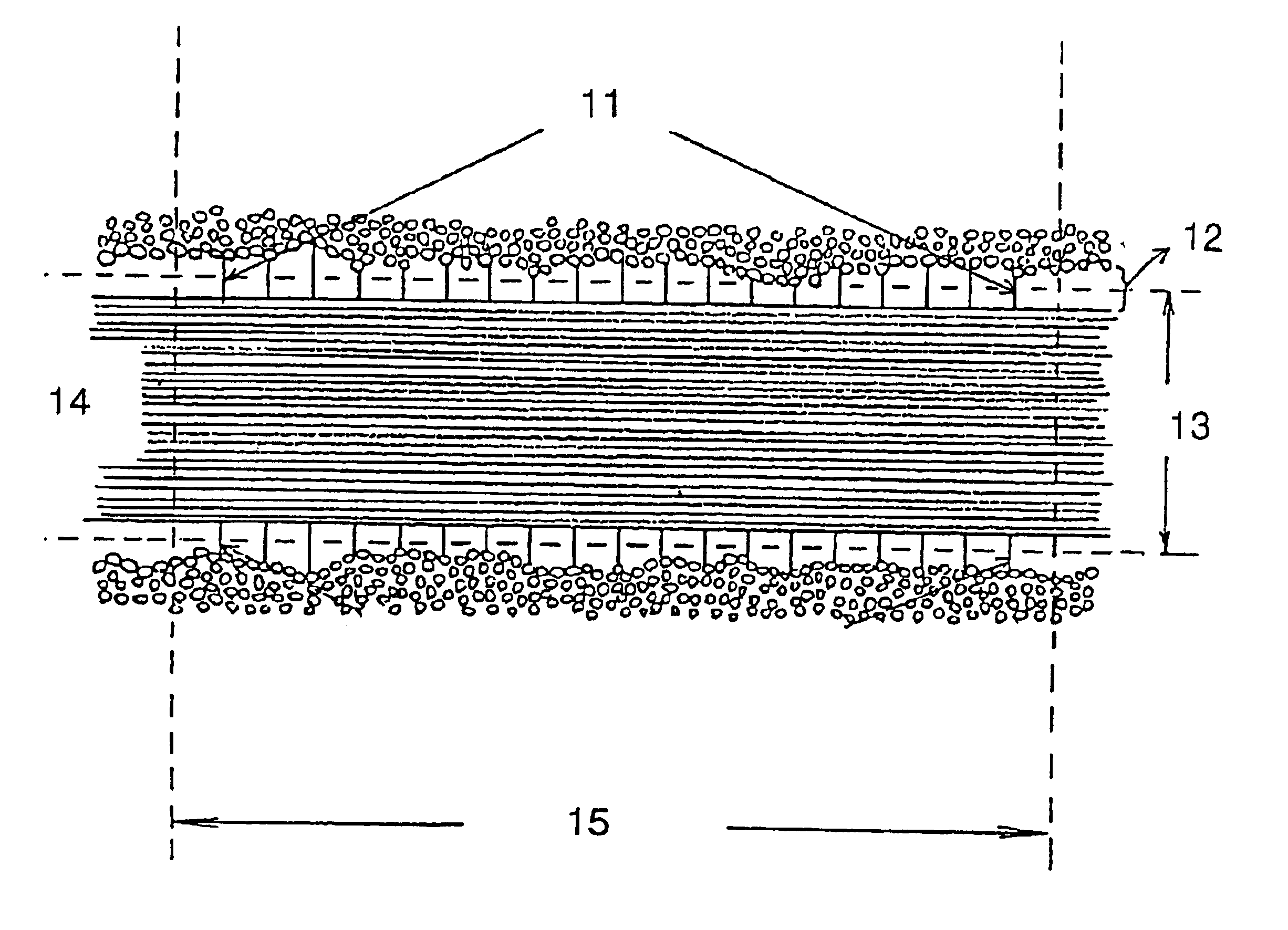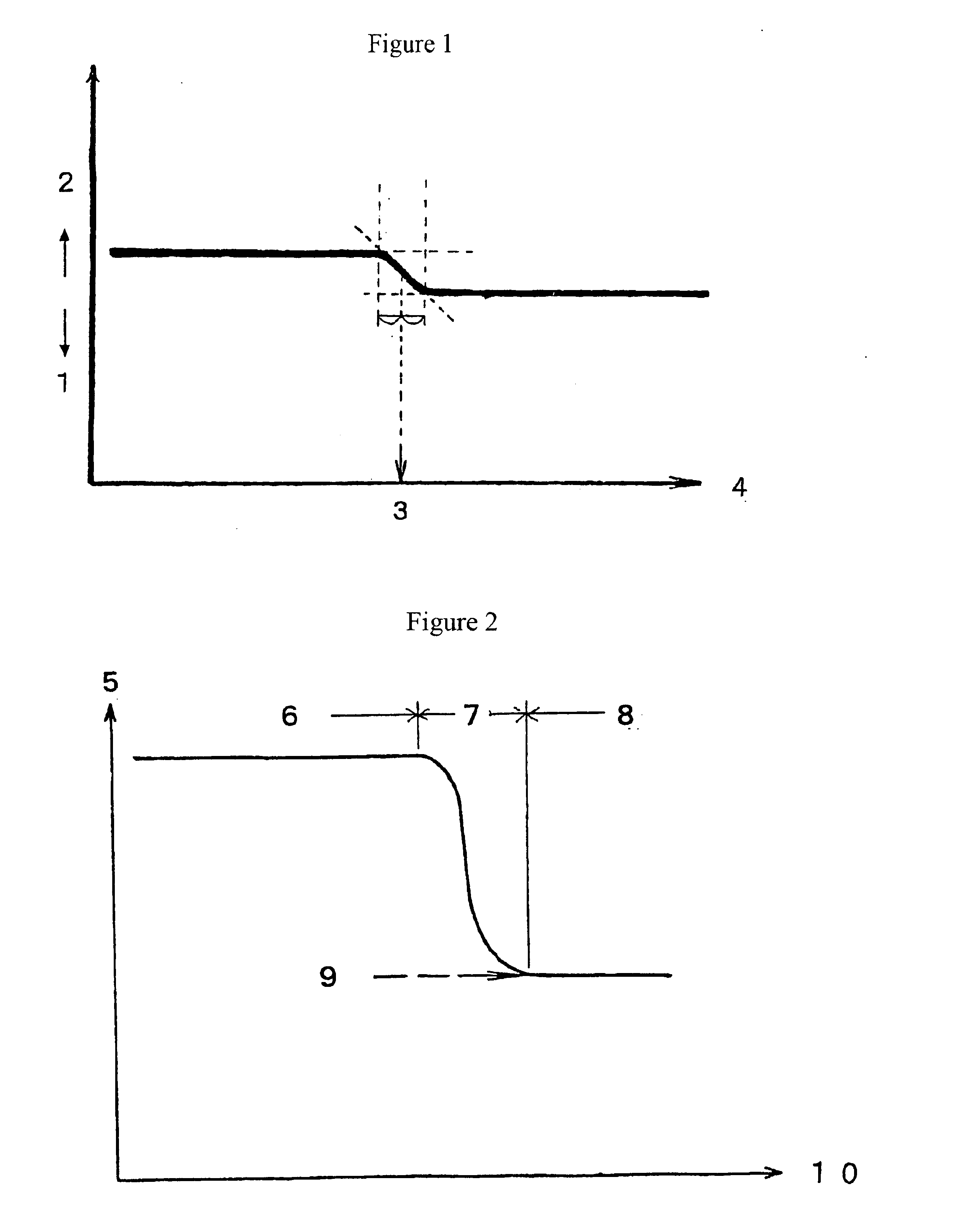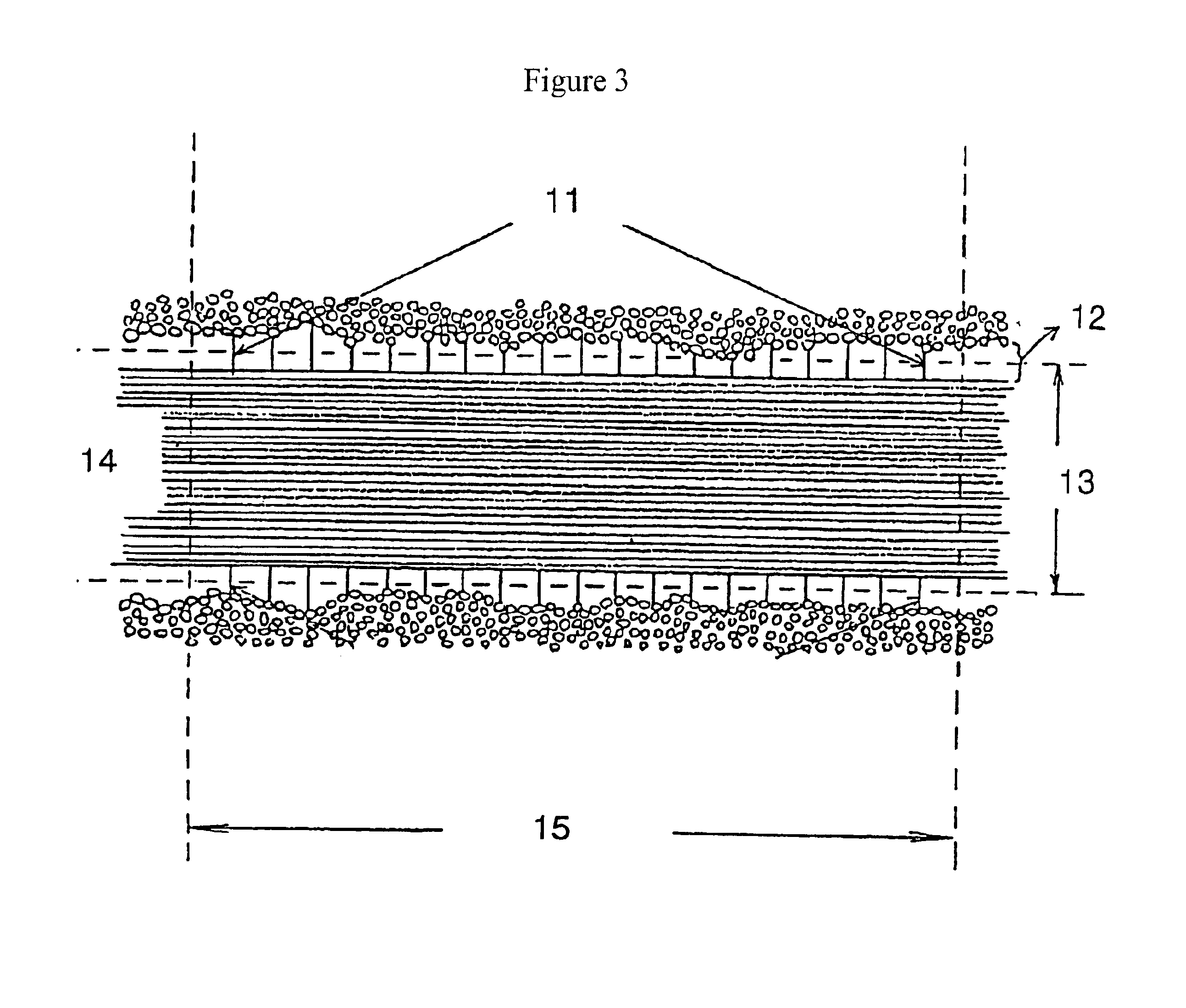Epoxy resin composition for fiber-reinforced composite material prepreg, and fiber-reinforced composite material
a technology of epoxy resin and composite material, which is applied in the direction of synthetic resin layered products, mechanical instruments, transportation and packaging, etc., can solve the problems of improving the effect of terms, tend to show ready failure, and the method also has its own disadvantages
- Summary
- Abstract
- Description
- Claims
- Application Information
AI Technical Summary
Problems solved by technology
Method used
Image
Examples
examples 1 to 8
Comparative Example 1 and 2
In the examples and comparative examples, the following starting material resins were employed.
[Starting Material Resins]
tetraglycidyl diaminodiphenylmethane, MY720 (code name, produced by Ciba Geigy)
bisphenol A type epoxy resin, Epikote 825 (made by Yuka Shell Epoxy K.K., registered trade name)
bisphenol F type epoxy resin, Epiclon 830 (made Dainippon Ink & Chemicals Inc., registered trade name)
biphenyl type epoxy resin, Epikote YX4000H (made by Yuka Shell Epoxy K.K., registered trade name)
polyethersulphone, Victrex 100P (made by the Sumitomo Chemical Co., registered trade name)
polyetherimide, Ultem 1000 (Made by GE Plastics Japan, registered trade name)
bisphenol S (made by the Konishi Chemical Co.)
3,3'-diaminodiphenylsulphone (made by the Wakayama Seika Kogyo Co)
4,4'-diaminodiphenylsulphone, Sumicure S (made by the Sumitomo Chemical Co., registered trade name)
dicyandiamide, DICY7 (made by Yuka Shell Epoxy K.K., registered trade name)
3-(3,4-dichlorophenyl)...
PUM
| Property | Measurement | Unit |
|---|---|---|
| temperature | aaaaa | aaaaa |
| temperature | aaaaa | aaaaa |
| particle size | aaaaa | aaaaa |
Abstract
Description
Claims
Application Information
 Login to View More
Login to View More - R&D
- Intellectual Property
- Life Sciences
- Materials
- Tech Scout
- Unparalleled Data Quality
- Higher Quality Content
- 60% Fewer Hallucinations
Browse by: Latest US Patents, China's latest patents, Technical Efficacy Thesaurus, Application Domain, Technology Topic, Popular Technical Reports.
© 2025 PatSnap. All rights reserved.Legal|Privacy policy|Modern Slavery Act Transparency Statement|Sitemap|About US| Contact US: help@patsnap.com



